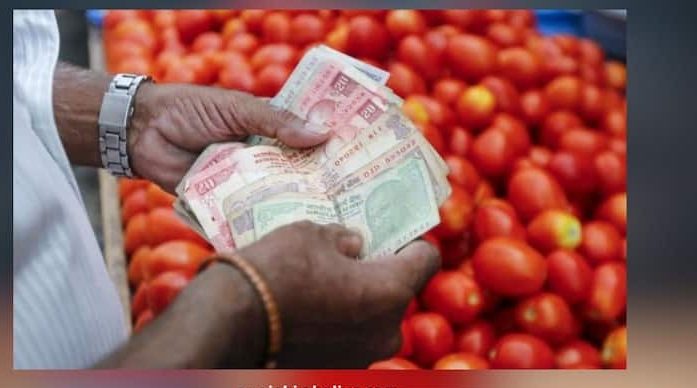Inflation in India: Big blow to Indian citizens, villagers are still struggling, shocking revelation in the report
Inflation in India: Inflation is ruining the fortunes of urban people of India. Due to this the purchasing power in cities is decreasing. Due to this, the demand for goods has also reduced due to which companies are facing problems. At the same time, it is a matter of relief that the purchasing power in rural areas remains intact, which has given hope to the companies.
In fact, corona Sales of electronics and grooming services had increased significantly in India during the pandemic, but now that the pandemic and lockdown are over, shopping habits have once again started declining in urban areas of India. People in cities are now reducing their spending, due to which companies and service providers are facing a decline in sales.
However, the decline seen in the market is quite different from rural India. People in rural areas are still buying refrigerators, two-wheelers and even cars. Thus, two different economic scenarios seem to be emerging in India – one is a slowdown in urban India, while consumption momentum in rural India is sustained. In such a situation, let us know in detail in this report why the people of the city have reduced their shopping and what effect has this had on the country's economy?
Why are people spending less than before?
This decline in urban demand is not just a small decline, but a balance of the post-pandemic boom in consumption. Actually, people were shopping more during the pandemic. At that time, people were spending on essential items like cleaning products, beauty products and electronics. Then, as services resumed and travel restrictions were eased, people started spending on more interesting goods and services like travel and personal care. It was called Revenge Appendix, because people were buying everything they did not buy during the pandemic. In simple language, after the pandemic, people started spending more and now gradually their spending habits are becoming normal, which is affecting many industries.
Decrease in income growth is also a major reason for low spending
In urban India, income growth has slowed for most of the population. This has affected their purchasing power. Britannia data shows that the share of unpaid workers in urban areas stood at 51% in the first quarter of 2024, up slightly from the previous year, but the income of these workers increased by only 3.4%, while the income of salaried workers increased by only 3.4%. Has happened. increased by 6.5%. Varun Berry, vice-chairman and MD, Britannia, said in a minute report that the income of about 51% of non-wage workers in urban India has stagnated, leading to a decline in consumer spending.
Inflation is also a major reason for low expenditure.
The rising prices of raw materials have increased the problems of consumers. Companies, especially consumer apparel companies, are continuously increasing the prices of their products. Along with this, consumers are also having to bear the burden of increased prices of raw materials. Apart from this, the prices of vegetables and food items have also increased, due to which the urban families are struggling. Budget But it is having an impact. For example, prices of onions, potatoes, tomatoes and pulses have increased significantly, making it difficult for 20-30% of urban households to purchase them.
Sales of cheap cars fell
Take, for example, Maruti Suzuki India, India's largest carmaker. Maruti's mini and compact car sales have declined during the September quarter. However, customer interest remained in larger cars and utility vehicles such as the Grand Vitara and Ford SUVs. To combat the slowdown, Maruti offered discounts of up to ₹29,300 on its cars, but sales of mini and compact cars still accounted for only 44.9% of total sales, compared to 48.8% in the previous quarter. This shows that people are now preferring big cars instead of small cars.
Some relief in rural India
Although people are still buying these cars in rural India compared to cities, the overall market growth has slowed down due to lower purchases in urban areas. That means sales are declining in urban areas, while demand is still strong in rural areas.
some improvements in festivals
A marginal increase in sales was seen during the festive period in October, especially in sales of passenger vehicles (cars) and two-wheelers (bikes and scooters). However, experts believe that this uptick may be temporary and may be difficult to sustain till the end of the year, as consumer sentiment is still bearish. This means that there is a slight increase in sales during the festive season, but it is not likely to continue for a long time.
Britannia Industries' concerns
Britannia Industries said in its second quarter results that urban India is facing increasing challenges. 30% of the fastest growing consumer goods products are sold in metro cities, but demand is declining 2.4 times faster than other regions. This means that there has been a significant decline in sales of fast moving consumer goods in cities.


Comments are closed.